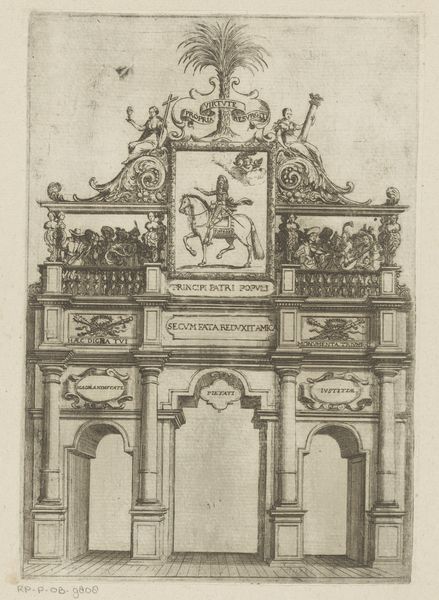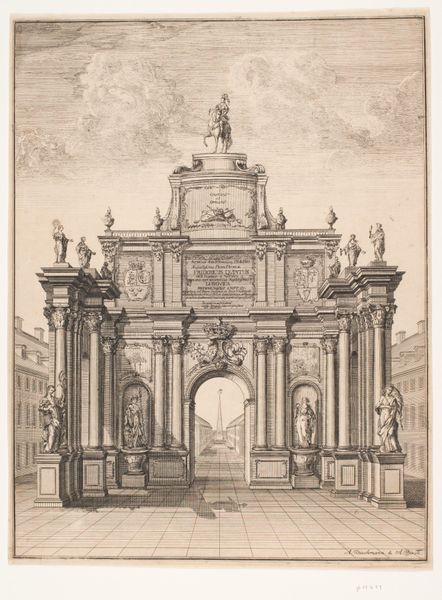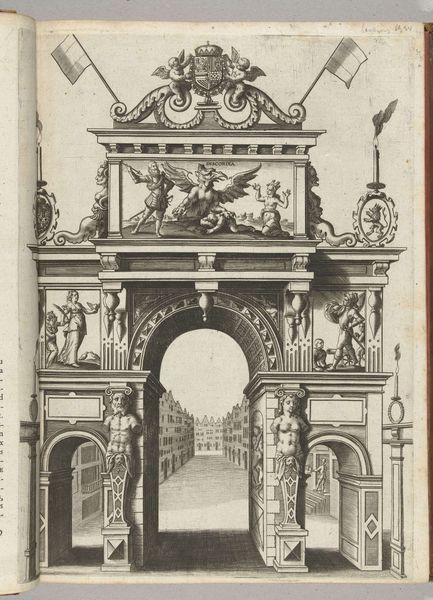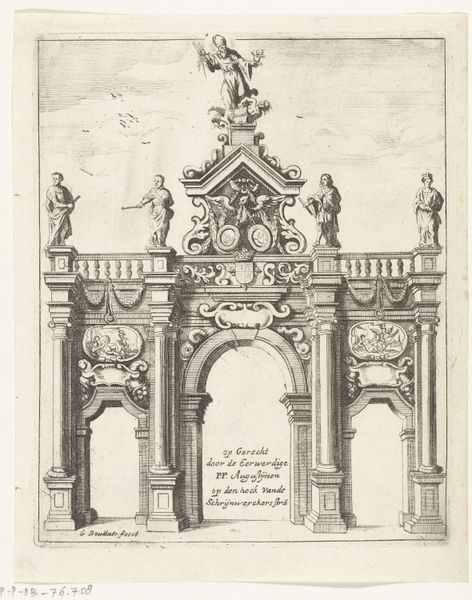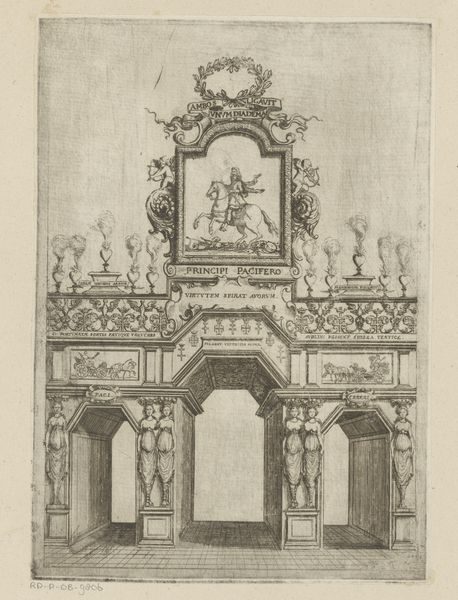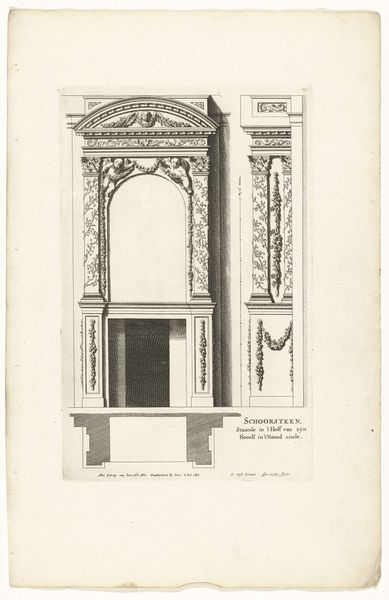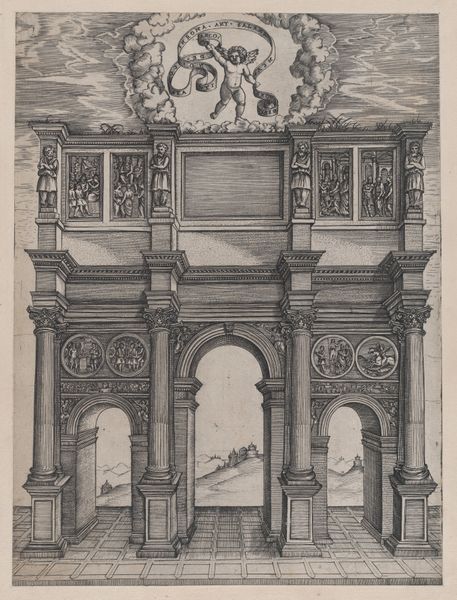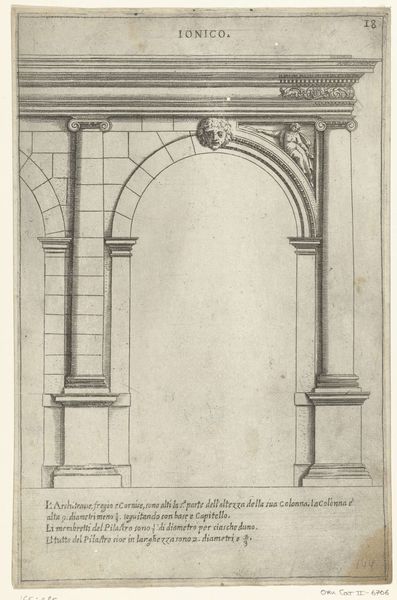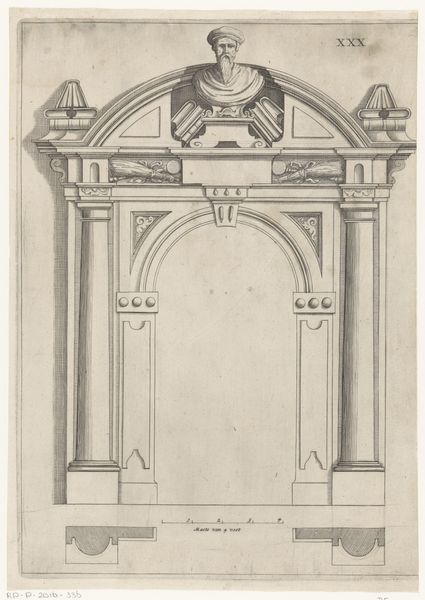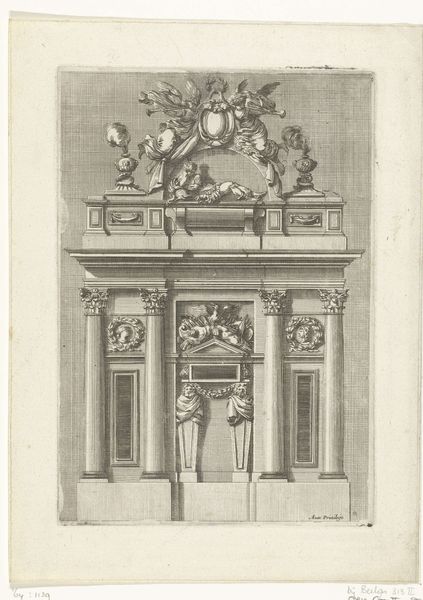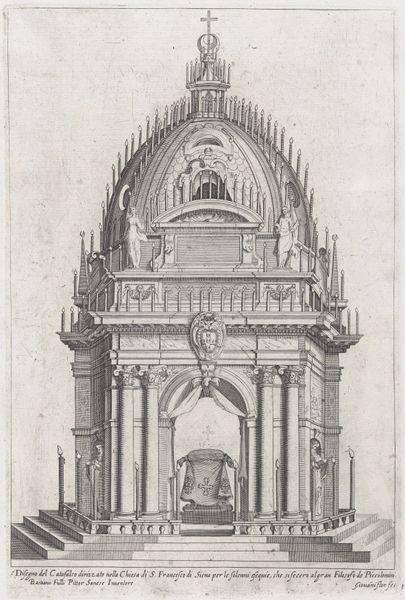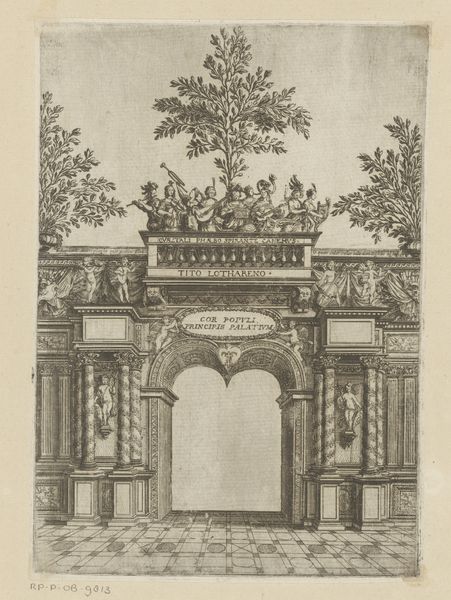
Triumphal arch surmounted by woman seated on a dolphin, four standing figures below, a temporary decoration for the entry of Pope Clement VIII in Bologna in 1598 1598
0:00
0:00
drawing, print, engraving, architecture
#
drawing
#
narrative-art
# print
#
geometric
#
cityscape
#
history-painting
#
italian-renaissance
#
engraving
#
architecture
Dimensions: Sheet (Trimmed): 8 11/16 × 6 3/16 in. (22.1 × 15.7 cm)
Copyright: Public Domain
Curator: At first glance, the scene conveys an idealized image, a vision of perfect order with its clean lines and the imposing geometry of the arch. Editor: Indeed. What strikes me most immediately is this architectural rendering—a print titled "Triumphal arch surmounted by woman seated on a dolphin, four standing figures below, a temporary decoration for the entry of Pope Clement VIII in Bologna in 1598," created around that same year. It gives us insight into the ephemeral public art meant to shape the city's image. Curator: Absolutely. Notice how the figure riding the dolphin surmounts everything. Dolphins, throughout history, symbolize guidance, transformation, and even salvation. This figure signals the benevolent and transformative power associated with the Pope's arrival. And consider how dolphins have, across many cultures, been seen as psychopomps or guides of souls, offering protection. Editor: You’re right to focus on the iconography. The temporary arches built for such papal entries were powerful declarations of religious and political authority, visually constructing power relationships for the populace. I wonder what message was intended by placing figures with different postures? Curator: The figures placed below appear poised yet somewhat diminutive—possibly civic representatives—beneath the weight of this papal presence. Their stance suggests humility, welcoming the pontiff into their city. These visual hierarchies spoke volumes to a population accustomed to reading symbolic language. Editor: And not just any language but also political claims. This event cemented Bologna's allegiance. It showcased wealth, skill, and also obedience in artistic form. The choice to represent a temporary structure with such meticulous detail suggests its importance extended beyond the moment. Curator: Precisely. The choice of dolphins here resonates deeply, linking Clement VIII with ancient symbolism—a symbolic effort to connect him to an almost timeless, benevolent form of leadership, one promising safe passage and spiritual protection to the faithful of Bologna. Editor: It prompts us to ask: Who was this print intended for? What circles, aware of this dense symbolic language, would fully grasp the power play embedded in such temporary structures, transformed here into something seemingly lasting through the art of the engraving? It captures a pivotal moment when art becomes politics and performance. Curator: Investigating the cultural resonance enriches how we receive an engraving depicting such political theatre. A structure, though temporary, leaves behind a lasting representation that conveys intricate political and spiritual statements. Editor: The symbolic resonance, preserved through prints like these, demonstrates how art actively constructs social hierarchies, and it allows us now to decode some messages about Bologna's role within the broader religious and political landscape of the time.
Comments
No comments
Be the first to comment and join the conversation on the ultimate creative platform.
